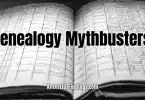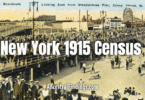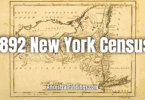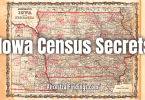In 1810, the United States was only 34 years into its existence and was still figuring things out—including how to count its people. That year marked just the third official census, and while the goal was simple on paper—get a headcount of everyone in the country—the results were far from perfect.
If you’ve ever looked through the 1810 census while researching your family, you know it’s not exactly a goldmine. Entire areas are missing. Everyone in the household except the head is just a number. It’s more frustrating than helpful sometimes. But understanding what was going on in the country at the time gives you a better sense of why it turned out the way it did—and what you can still pull from it.
A Young Country, A Big Task
The Constitution established the idea of taking a census every ten years. The purpose wasn’t to document families or preserve history but to determine how many representatives each state should have in Congress. More people meant more political power, which drove the process.
By 1810, there were 17 states in the Union. Ohio had recently joined, and the population spread westward into new territories. The country was in a state of constant growth, but also uncertainty. War with Britain was looming, and internal tensions were building over things like slavery, industry, and expansion. The census was supposed to help sort some of that out.
Who Was in Charge of the Count?
Trained census workers didn’t do the actual counting. It was assigned to U.S. marshals and the assistants they hired in each district. These were regular folks, many of whom had other jobs. They traveled by horseback or foot, asking questions door to door and writing everything out by hand.
There was no standardized form. Every census taker used their handwritten sheets, copying the format as best they could. Two copies had to be made—one sent to Washington, and one kept locally, often in the courthouse.
That setup made the process messy. Some records were poorly written. Others were lost or destroyed. Fires, floods, disorganization—you name it. Entire sets of census returns just vanished. That’s why Georgia is completely missing from the 1810 census. Parts of Tennessee, Mississippi, and Washington, D.C. are also affected.
What the Census Collected—and Why
The 1810 census didn’t collect a lot of information. You get:
- The name of the head of household
- Number of free white males and females, broken down by age
- The number of enslaved individuals
- The number of other free persons (non-white, non-slave)
- Data about manufacturing or industry in the household
That’s it—no names of children, relationships, birthplaces, or occupations. Most people in the household are reduced to a tally mark in a column. And in many cases, the handwriting is hard to read.
The reason for these categories had everything to do with politics and national needs. They wanted to know how many men could serve in the military. They needed to count the enslaved population to apply the Three-Fifths Compromise, which increased congressional representation for slaveholding states. And the questions about manufacturing? That was about war preparations. The government wanted to know how much the country could produce if trade with Europe collapsed.
What It Was Used For
The results were used to adjust the number of representatives each state had in Congress—that’s where the real power came in. The census was also used to guide taxes, military planning, and—in a limited way—economic decisions. The manufacturing section didn’t get much attention then, but it was a sign that the government was starting to take an interest in the tracking industry.
For me, the 1810 census isn’t just a document—it’s a window into how the government saw the population. They weren’t trying to preserve personal stories or family connections. They were building a structure of control, planning, and representation. Knowing that helps explain why the census looks the way it does.
What I’ve Found—and How I Work Around It
As someone who’s spent years researching families, I can say the 1810 census has made me scratch my head more than once. Sometimes, all I have is a name and a few tick marks. Sometimes, the people I’m looking for aren’t even there, especially in counties with missing records.
But I’ve learned to treat it like one piece in a much bigger puzzle. If someone shows up, I look at their household structure. How many children? Are there older people who might be parents or in-laws? If someone doesn’t show up, I ask myself why. Did they move? Were they living with someone else? Or was their part of the census just lost?
I’ve also successfully paired 1810 entries with tax, wills, deeds, and church records. Those documents can give names, dates, and relationships the census doesn’t offer. In some cases, they even help confirm that the anonymous tick mark under “female 26–44” was the person I thought it might be.
It’s not easy work. But occasionally, that census line helps confirm a theory, reveal a new branch, or answer a question hanging out there for years. When it does, it makes the time spent digging through those hard-to-read pages worth it.






